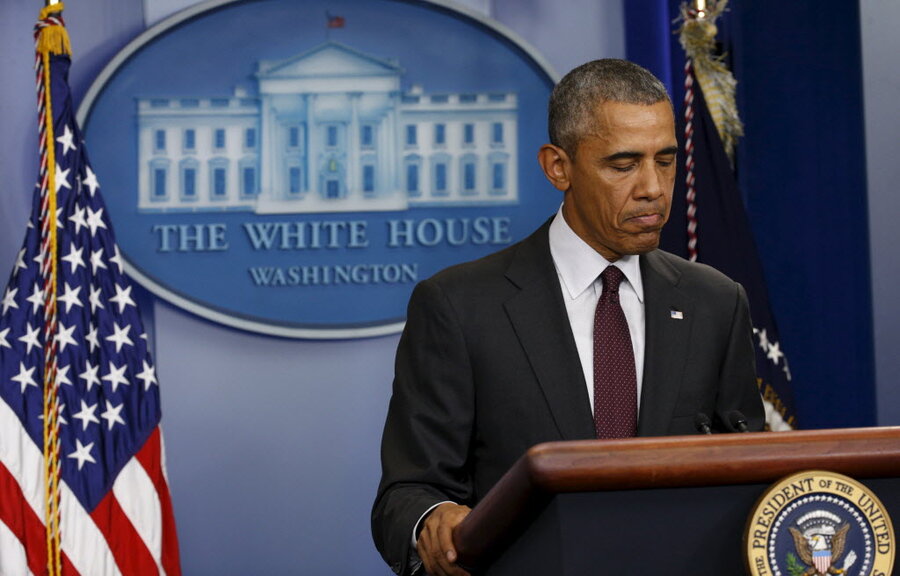Oregon shooting: Is it time for national peacemaking?
Loading...
In a tone of exasperation, Barack Obama expressed his frustration Thursday after the latest mass shooting in the United States, this time at an Oregon community college. As president, he has issued statements of both anger and consolation following at least nine mass killings.
“Somehow this has become routine,” Mr. Obama said. “We’ve become numb to this.”
Like many people who seek an end to gun violence, Obama again called for tougher gun laws, which would certainly help to curb opportunities for would-be mass shooters. The president has long sought disarmament in many areas, such as for nuclear bombs, chemical weapons, even cyber-weapons. In the history of peacemaking, de-weaponization is a favored tactic.
One reason such an approach has been inadequate over the past century is that it is based on a concept of peace as merely the absence of conflict. The desire to eliminate the physical means of violence only begins to touch on the idea of peace in its affirmative meaning, such as harmony, empathy, unity. “At the center of nonviolence stands the principle of love,” stated Martin Luther King Jr.
A vivid example of this understanding of “positive peace” was the reaction of Virginia Tech University following the 2007 shooting on its campus. In the same classroom building in which a gunman killed 30 people, the school set up an interdisciplinary program called The Center for Peace Studies and Violence Prevention. One school dean calls it a “healing center.”
Obama and others could also note the success of anti-bully campaigns in schools and elsewhere over the past two decades. These programs do not just teach against aggression but also promote social skills, such as a capacity for compassion, respect for alternative views, and an ability to form community.
Another proof that peace can be an active reality is the history of nonviolent movements. Two scholars, Erica Chenoweth and Maria Stephan, point out in a 2011 book that campaigns of nonviolent resistance were more effective than violent insurgencies from 1900 to 2006.
Dr. King defined nonviolent tactics as “a courageous confrontation of evil by the power of love.” Peace can be learned, by both individuals and nations, and not as the opposite of something else. It operates out of a conviction that violence is not inevitable because so many human societies have learned how to supplant it with high ideals. “War is not in our genes, and we need not accept human aggression as a fate,” declared a 1986 statement by UNESCO.
Surely Americans are not yet “numb” to the best antidote to gun violence: peacemaking, in all its active forms.







